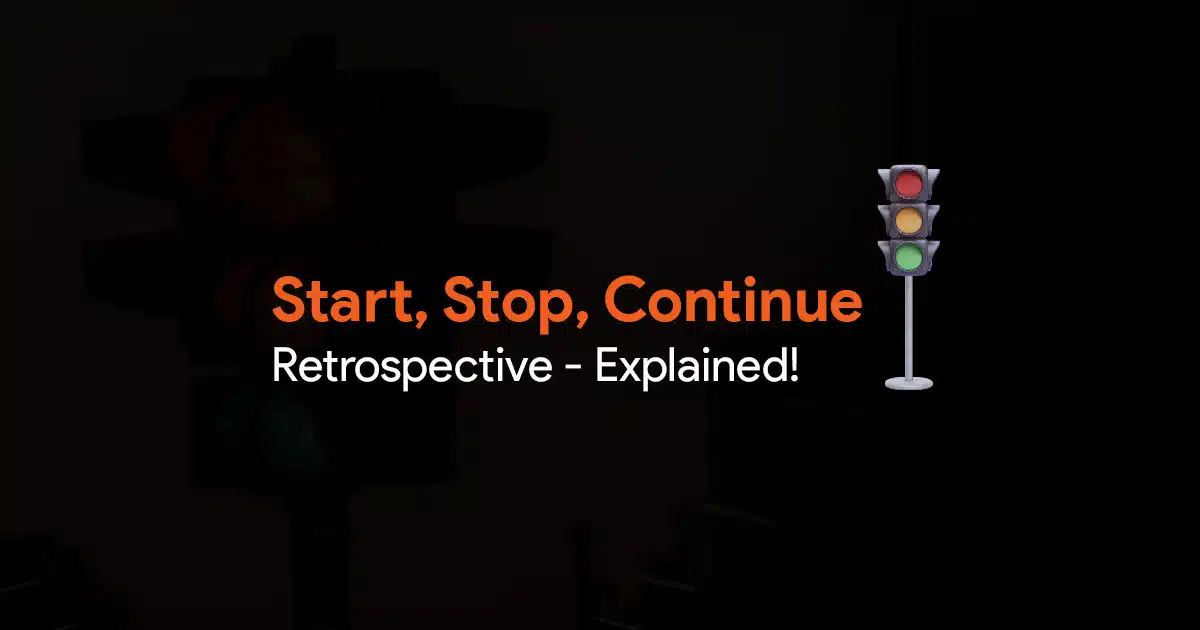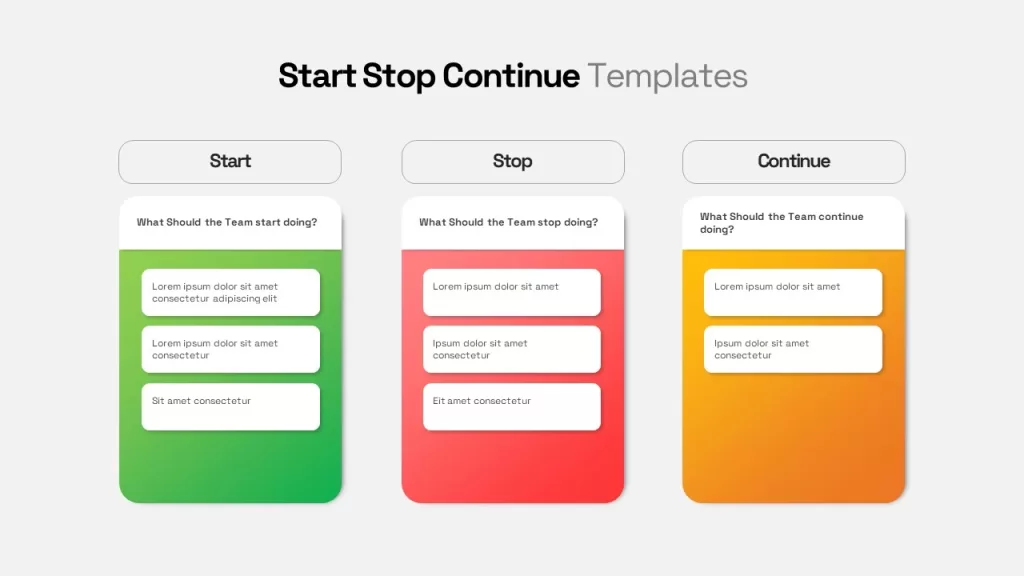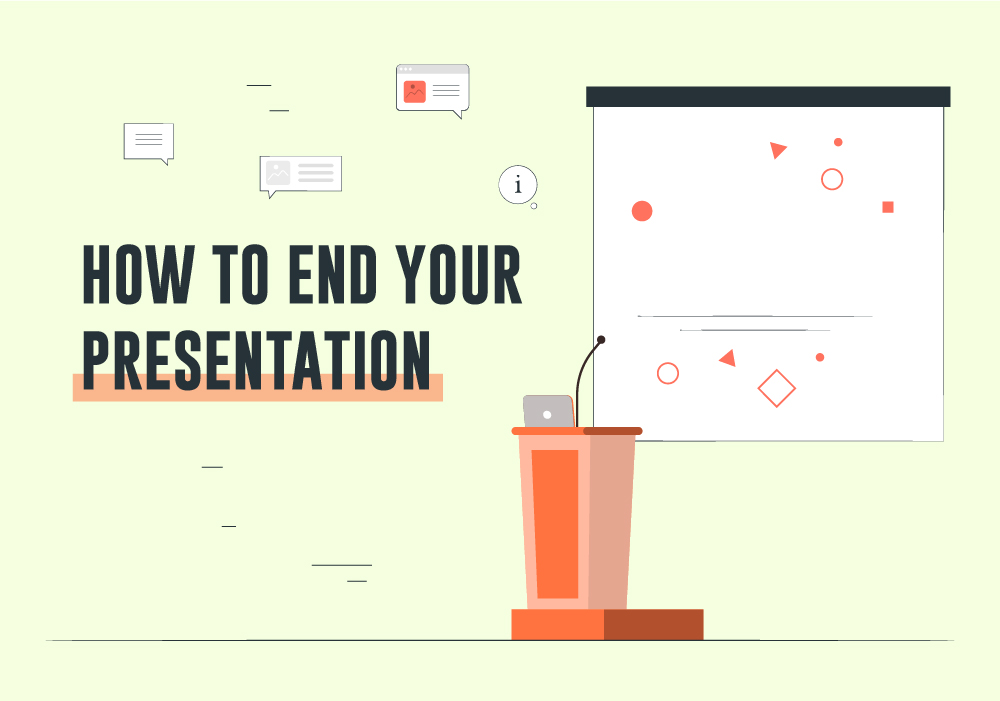- Table of contents
- Why use Start, Stop, Continue retrospective?
- Elements of Start, Stop, Continue Framework
- How do you do a Start, Stop, Continue Analysis?
- Examples of Start, Stop, and Continue
- How Should the Start, Stop, and Continue Analysis Results Be Presented?
- Start, Stop, Continue Templates
- Conclusion
Start, Stop, Continue Retrospective – Explained

Start, Stop, Continue Retrospective is a popular framework used by teams for reflecting on their performance, identify areas for improvement, and to create a plan of action. It consists of three steps: start, stop, and continue.
It’s at the start phase that the team identifies new processes, tools, or techniques to improve their performance. In the stop phase, the team works on identifying activities, processes, and behaviors that may be hindering their performance. Then in the continue phase, the team identifies activities, processes and behaviors that are working well and should be continued.
This retrospective framework is commonly used in agile software development and project management teams. It promotes collaboration and communication and provides an opportunity for team members to share their thoughts and experiences in a safe and open environment.
During the Continue phase, the team identifies activities, processes, or behaviors that are working well and should be continued.
This retrospective framework is commonly used in agile software development and project management teams. It promotes collaboration and communication and provides an opportunity for team members to share their thoughts and experiences in a safe and open environment.
A Start, Stop, Continue retrospective can be conducted in-person or remotely, and the team can document their ideas and action items on a whiteboard, sticky notes, or a shared document.
Overall, the Start, Stop, Continue retrospective is a simple yet effective framework for teams to improve their performance and work together more efficiently.
Table of contents
Why should you use Start, Stop, Continue Retrospective?
Why use Start, Stop, Continue retrospective?
There are several reasons why teams use Start, Stop, and Continue retrospectives.
- Structured Approach: The framework provides a structured approach to reflection, allowing team members to identify areas for improvement and prioritize actions for the future. This enables them to continuously improve and evolve, resulting in higher quality work and better outcomes.
- Communication and collaboration: it fosters open communication and collaboration within the team and provides a safe and non-judgmental space for team members to share their thoughts and experiences, providing valuable insights that may not have been apparent otherwise. This helps build trust and strengthen relationships among team members.
- Essential Tool In Agile Environments: The Start, Stop, Continue retrospective is used by teams working in agile environments. Agile methodologies emphasize continuous improvement, and the retrospective is crucial in this process. By reflecting on their work and identifying areas for improvement, the team can adapt and adjust their processes to deliver better results.
- Helps In Identifying Issues: It can help identify issues or challenges affecting the team’s performance. By reflecting on what is not working well and identifying potential solutions, the team can take action to address their issues.
- Mechanism To Celebrate Success: It provides a mechanism for the team to celebrate its successes and acknowledge its achievements. By reflecting on what is working well and identifying ways to continue this success, teams can build on its strengths and maintain its momentum.
- Continuous Improvement: Finally, the Start, Stop, Continue retrospective is a powerful tool for building a culture of continuous improvement. By regularly reflecting on their work and identifying areas for improvement, the team can create a mindset of continuous learning and growth. This can help to drive innovation and encourage the team to take risks and explore new opportunities.
Elements of Start, Stop, Continue Framework
The Start, Stop, Continue retrospective typically includes three elements:
- Start: This is where teams focus on what they need to start doing in order to improve their performance. It could include new initiatives, behaviors, or processes the team can implement to achieve their goals. This element is forward-looking and proactive as it encourages the team to identify new opportunities and take action to improve their work.
- Stop: This is where teams focus on what they need to stop doing in order to improve their performance. It could include behaviors or processes that are no longer effective or are hindering the team’s progress. This element is retrospective and critical. It encourages the team to reflect on their past performance and identify areas for improvement.
- Continue: This element focuses on what the team needs to continue doing in order to maintain its performance. It could include successful behaviors or processes that the team wants to maintain or build upon.
This element is also retrospective, as it encourages the team to reflect on their past performance and identify areas of strength they can leverage in the future.
Each of these elements is important for improving the team’s performance. By identifying what they need to start, stop, and continue doing, the team can create a plan of action that is based on their strengths and weaknesses.
This can help the team to build upon their successes, address their weaknesses, and achieve their goals more effectively.
How do you do a Start, Stop, Continue Analysis?
- Set up the retrospective: Schedule a meeting with the team and let them know you will conduct a Start, Stop, Continue analysis. Make sure everyone is aware of the purpose and format of the retrospective.
- Define the scope: Identify the specific area or project you will analyze. This will help to focus the team’s discussion and ensure that the analysis is relevant to their work.
- Collect data: Before the meeting, gather data on the team’s performance in the area being analyzed. This could include metrics, stakeholders’ feedback, and team behavior observations.
- Introduce the Start, Stop, Continue framework: Explain the purpose of each element and how they can be used to improve the team’s performance. Encourage the team to be honest and open in their feedback.
- Brainstorm ideas: Ask the team to brainstorm ideas for each element of the framework. For each element, ask questions such as: What should we start doing? What should we stop doing? What should we continue doing? Encourage the team to think creatively and come up with as many ideas as possible.
- Categorize the ideas: Once the team has generated a list of ideas, group them into categories based on their similarity. This will help to identify common themes and prioritize the most important ideas.
- Prioritize the ideas: Use a voting system to prioritize the most important ideas. Each team member can vote for the ideas that they think are most important. This will help to identify the ideas that the team agrees are the most important.
- Develop an action plan: Based on the prioritized ideas, develop an action plan for the team. This should include specific tasks, timelines, and responsibilities for each idea. Make sure the action plan is realistic and achievable.
- Follow up: Monitor progress on the action plan and provide feedback to the team. Make sure to celebrate successes and address any issues that arise.
By following these steps, you can conduct a Start, Stop, Continue analysis that is thorough, productive, and actionable. The analysis can help to identify areas for improvement and provide a roadmap for achieving better results.
Examples of Start, Stop, and Continue
A team might come up with the following Start, Stop, Continue suggestions during a retrospective:
Start:
- Start conducting regular one-on-one meetings between team members and managers to discuss performance and career goals.
- Start developing a knowledge management system to better capture and share knowledge across the organization.
- Start dedicating more time to team-building activities to foster a stronger team dynamic.
- Start experimenting with new tools and technologies to improve productivity and efficiency.
- Start exploring new markets and opportunities for growth.
Stop:
- Stop scheduling unnecessary meetings that do not add value to the team’s work.
- Stop relying solely on email for communication and encourage team members to use more effective channels like video conferencing and instant messaging.
- Stop using outdated processes and systems that do not align with the team’s current needs.
- Stop working in silos and instead promote cross-functional collaboration.
- Stop tolerating negative attitudes or behavior that can be detrimental to team morale.
Continue:
- Continue providing ongoing training and professional development opportunities for team members.
- Continue soliciting and implementing feedback from customers to improve product offerings.
- Continue to foster an inclusive and supportive workplace culture.
- Continue conducting regular retrospectives to identify areas for improvement.
- Continue recognizing and rewarding team members for their hard work and contributions.
How Should the Start, Stop, and Continue Analysis Results Be Presented?
Presenting the results of a Start, Stop, and Continue analysis is a critical step in the retrospective process. It allows teams to reflect on their progress and determine actionable steps.
The following advice will help you convey the outcomes of a Start, Stop, Continue analysis effectively:
- Organize the results: First, categorize the ideas generated into the appropriate Start, Stop, and Continue buckets. This will make it easier for the team to see what areas they should be focusing on and what changes need to be made.
- Prioritize the ideas: After the ideas have been organized, prioritize them based on the team’s goals and impact. Focus on the ideas that will have the most significant impact on the team’s work and are most feasible to implement.
- Use visual aids: Visual aids like graphs and charts can help to make the presentation more engaging and easy to understand. Consider using graphs to show the most popular ideas or to demonstrate the impact of the ideas on the team’s work.
- Discuss the ideas: During the presentation, provide context around each of the ideas and explain how they were generated. Discuss the ideas in more detail, including the benefits of implementing them and the potential challenges that may arise.
- Set goals and action items: To ensure that the team takes action based on the analysis, set goals and action items for each of the ideas presented. Assign specific team members to be responsible for each action item and set a timeline for when each action should be completed.
- Follow up: Follow up with the team regularly to ensure progress on the action items after the presentation. Provide ongoing feedback and support to ensure the ideas are implemented successfully.
- Discuss the process: Explain to the team how the Start, Stop, Continue analysis was conducted and what insights were gained from the exercise. Highlight the key takeaways and what the team can learn from the analysis.
- Celebrate successes: Take time to acknowledge and celebrate the successes and progress the team has made. This helps to boost team morale and motivation and encourages the team to continue working towards their goals.
- Communicate openly: Encourage the team to communicate openly and honestly about the results of the analysis. Foster an open communication and trust culture where team members feel comfortable sharing their thoughts and opinions.
- Address challenges: Discuss any challenges or roadblocks that the team may face when implementing the ideas generated from the analysis. Encourage the team to brainstorm potential solutions and to work together to overcome these challenges.
- Involve stakeholders: If the results of the analysis will impact stakeholders outside of the team, consider involving them in the presentation or discussion. This can help to ensure that all parties are aligned and on board with the proposed changes.
- Review progress: Set a date to review the action items and determine whether the team is on track to achieve its goals. Use this opportunity to adjust plans or goals as necessary and to continue fostering a culture of continuous improvement.
Start, Stop, Continue Templates
You can also check out this collection of Scrum PowerPoint templates that you can easily repurpose to your needs!
Conclusion
In conclusion, the Start, Stop, Continue retrospective is a simple and effective framework for teams to reflect on their work and identify actionable steps to improve. By emphasizing specific actions and behaviors, the framework helps teams to focus on practical changes they can make to improve their work.
The framework is easy to understand and accessible to teams of all levels of experience.
It also promotes collaboration, prioritization, reflection, and feedback, which can help teams foster a culture of continuous improvement and open communication.
Although there are some limitations to the framework, the advantages of Start, Stop, Continue make it a popular choice for retrospectives in many organizations.
Teams may utilize Start, Stop, Continue to enhance their work and promote a culture of continuous improvement by following the instructions in this guide and considering the benefits and drawbacks of the framework.

![How to Create a Business Case Presentation [Templates and Examples]](https://slidebazaar.com/blog/wp-content/uploads/2023/03/How-to-Create-a-Business-Case-Presentation-Templates-and-Examples.jpg)

